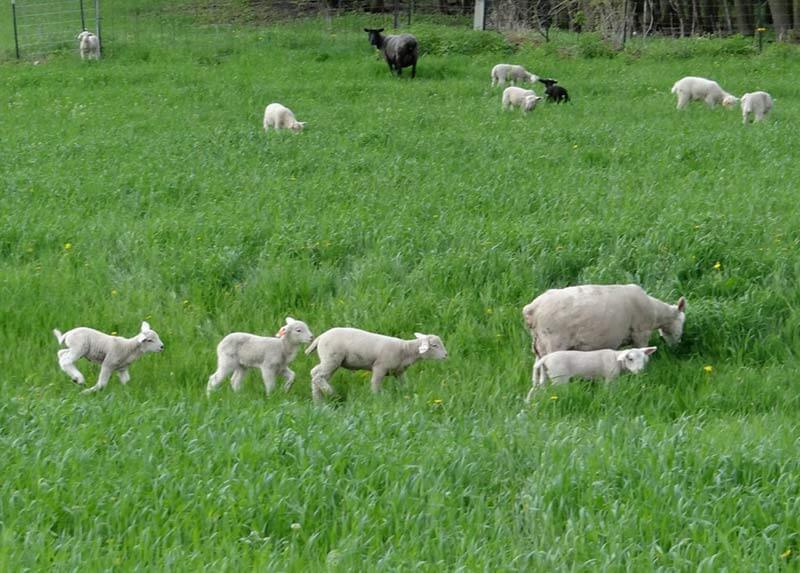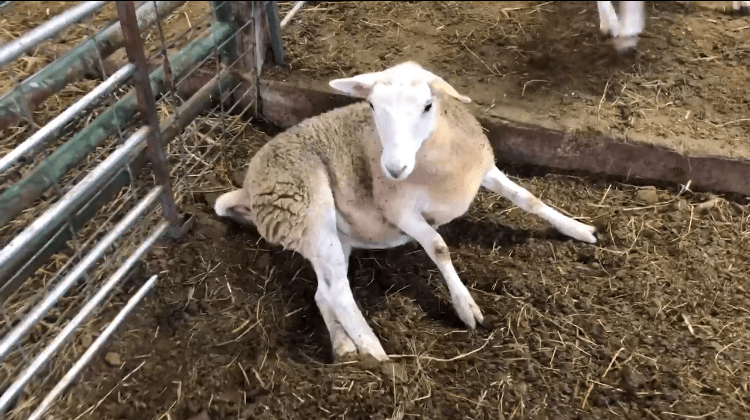Diseases affecting the sheep’s nervous system can affect sheep at all ages and points in the production cycle, presenting with a number of different signs including blindness, depression, nervousness, scratching, circling or difficulty walking or standing.
The most common and significant neurological disorder, the metabolic disease tends to affect adult sheep, particularly around lambing time. Early treatment improves the outcome. Having a standard on-farm treatment protocol is important. If the animal does not respond to treatment seek veterinary assistance. The three diseases below are often difficult to distinguish, particularly close to lambing.
Pregnancy Toxaemia/Twin Lamb Disease
Occurs in late pregnancy in ewes carrying multiple lambs and usually affects thinner ewes that have not received enough concentration. The first signs are usually loss of appetite, a ewe separating herself from the flock, standing still and seeming blind. The appearance of twin-lamb in one ewe is an indication that flock nutrition levels may be a problem and should be assessed in addition to individual treatment. Many cases are difficult to treat without aborting the lambs. To control, the condition score of ewes, scan for lamb numbers and plan an appropriate diet based on forage analysis Feed according to the number of lambs carried and the condition of the ewes score.

Hypocalcaemia
In contrast to the equivalent condition in cattle (milk fever), Hypocalcaemia tends to be seen in late pregnancy rather than early lactation. Ewes in any condition can be affected, particularly the following stress e.g. gathering for housing/vaccination. Ewes have difficulty walking or lying down, are depressed and may develop bloat. Control can be difficult – watch the flock closely after gathering and have a calcium injection handy
Hypomagnesaemia
Hypomagnesaemia nearly always occurs at peak lactation. Lush grass is low in magnesium so ewes are at risk when grazing this pasture type. Signs: excitability, shaking and convulsions. Death follows rapidly (ewes are often found dead). Watch the flock closely after moving on to lush pasture. Have magnesium injection handy. In high-risk flocks, magnesium supplementation can be given by enriched cake, rumen bullets or licks.

Scrapie
This infectious, untreatable, fatal brain disease is a Transmissible Spongiform Encephalopathy (TSE) and is in the same group as BSE in cattle. Resistant to all disinfectants, Scrapie can persist in the environment for years.
Tending to arise in older animals with only one or two sheep being affected at any one time, clinical signs include scratching, nervousness, weakness and weight loss. The eventual outcome is death.
Genetics determine how likely an individual is to develop scrapie. By breeding only from the more resistant genotypes, the national flock will eventually become less at risk.
Swayback
Swayback affects lambs when ewes have had low copper concentrations in late pregnancy through insufficient copper in food or pasture, or copper being ‘locked up’ by other minerals in grass/soil. The suspected copper deficiency must be treated with caution as too much copper is poisonous.

Border Disease/Hairy Shaker Lambs
The classic example of this viral infection is the ‘Hairy Shaker’ lamb.
Lambs have a long hairy coat, and trembling muscles and most grow slowly and fail to thrive. Hairy Shaker lambs result from ewes meeting the Border Disease virus for the first time in early pregnancy. Most commonly this results in abortion, occasionally unborn lambs survive becoming persistently infected (PI) which are likely to be weak, and will continually shed the virus. Not all PI’s are weak and hairy – they may go on to breed, perpetuating the problem.
Eradication can be attempted; however, it may be more practical to deliberately expose all future breeding stock to the virus. This is a crude form of vaccination, achieved by carefully mixing future breeding stock with Hairy Shakers.
